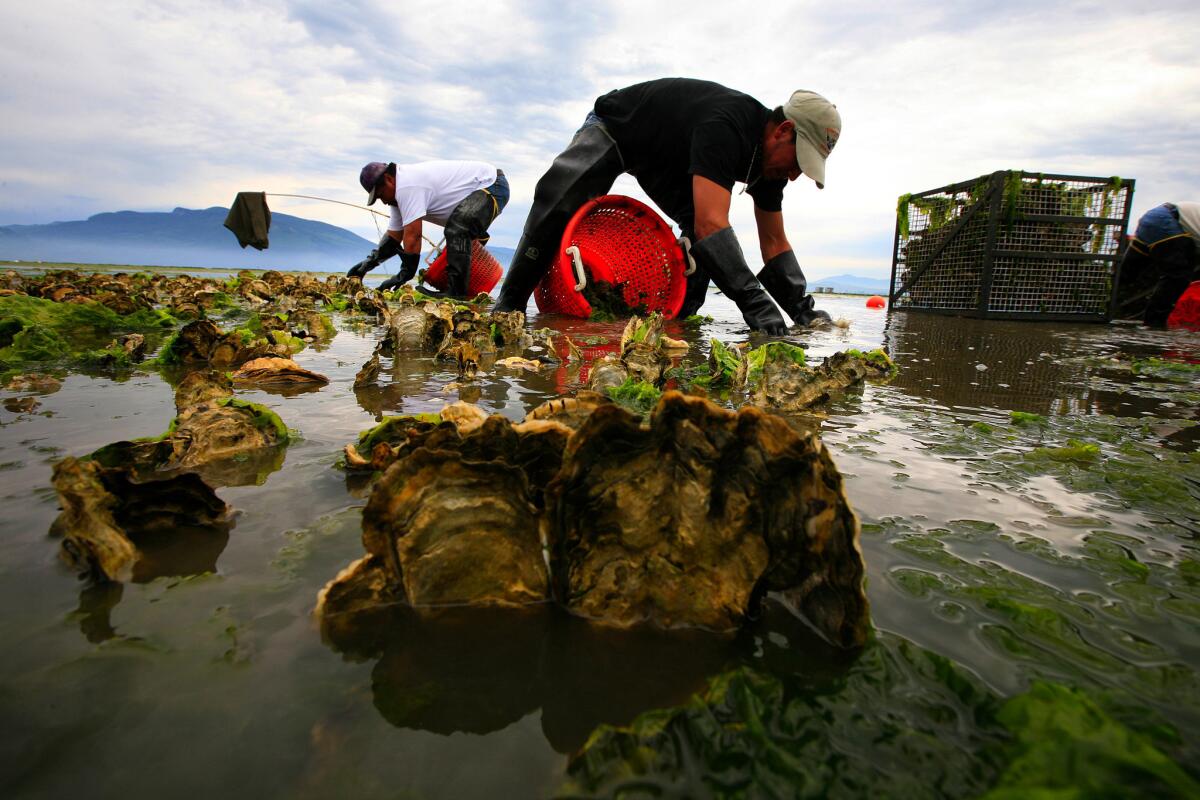Editorial: The plastics you don’t see might kill you

- Share via
Disposable gloves and face masks — along with antiseptic wipes, disposable grocery bags, and bottles of hand sanitizer — have been crucial first lines of defense against the coronavirus.
What those items have in common, other than helping humans avoid contracting and possibly dying from COVID-19, is that they are generally made of some type of plastic. Sadly, though disposable plastic masks and gloves may be helping to save lives now, they may be endangering our future health.
Not only do plastics refuse to biodegrade, but minuscule plastic particles are in the air we breathe and the food we eat, according to new research.
The findings, published last month, were probably largely overlooked given the timing. In June, the COVID-19 pandemic collided with another national crisis — massive civil unrest driven by an overdue reckoning with systemic racism and police violence — and both crises pose more immediate existential threats than plastic.
Still, it’s a good reminder that even while we are depending on plastic to get us through the current health crisis, it does come with a cost.
One side effect of the pandemic is a wave of discarded gloves, masks, and takeout containers that have been dumped into landfills and into the oceans, washing up on beaches along with the usual plastic water bottles and bags. It has exacerbated an already-dire global plastic trash crisis that has been worsened a breakdown of the recycling market for plastic waste in recent years.
Even before, recycling efforts hardly made a dent in the volume of plastic waste produced annually. Most of the more than 8.3 billion metric tons of plastic ever produced haven’t been recycled and remain in the environment somewhere and in some form. Plastic doesn’t biodegrade like, say, paper or cotton (which if tightly woven and paired with silk is an effective material for resuable face coverings). It just breaks down into smaller pieces. Some of the larger plastic pieces are gobbled up by sea birds and mammals, often resulting in their strangulation, starvation or suffocation. Other pieces continue to break down into particles so small that they can only be seen with a microscope, making them airborne and potentially dangerous.
How mobile? In one paper published in the Journal Science, researchers discovered microplastic in dust collected from otherwise pristine wilderness areas including 11 national parks and wilderness areas. The plastic they found primarily came from shedding synthetic clothing, they reported.
Another study found that microplastic is able to invade the root systems of vegetables and fruit trees, probably through water, and into the food we eat. The researchers bought apples, lettuce, carrots, and other commonly consumed plants at a market in Italy and found traces of microplastic in samples.
The recent studies were both revelatory and confirmed what other studies have already documented or suspected about the pervasiveness of microplastic. Plastic traces have been found in seafood, salt, beer and bottled water. Microplastic has been discovered in the most remote corners of the globe, deposited in the deepest oceans and snow of the Arctic Circle by wind and rain.
At this point, we probably don’t need more evidence that plastic is everywhere. What would be helpful is to know the health implications of breathing and consuming it. Plastic contains toxins and chemicals like bisphenol A and phthalates, which are endocrine disruptors that have been linked to reduced fertility and other hormone problems. Are those chemicals leaching into our bodies from the tiny bits of plastic we ingest and inhale?
Meanwhile, nations and states such as California that have shown leadership on plastic reduction strategies must redouble their efforts to make up for lost ground. It was reasonable to err on the side of extreme caution earlier this year by suspending single-use bag bans, such as California did, and to tell customers to leave their reusable bags and beverage cups at home. Little was known at the time about how the coronavirus was transmitted, and one study found that in controlled environments the SARS-Cov-2 virus could remain stable on surfaces for up to three days. But in May, the Centers for Disease Control and Prevention asserted that the virus is primarily spread by person-to-person contact, not from touching surfaces.
Recently, more than 100 virologists, epidemiologists and other health experts from 18 countries signed a joint statement saying that with proper hygiene, reusable food ware and personal grocery bags and cups are safe, according to the best science we have.
Plastic has long provided many benefits to human health existence — from medical catheters to product packaging that keeps food fresher for longer. No one is suggesting that we banish all plastic — just that we restrict usage only to what is necessary, and be mindful of the health consequences of the invisible plastic particles in our bodies. Even as we grapple with the formidable short-term crises facing us, we must keep in mind the long-term threats to our health and our environment.
More to Read
A cure for the common opinion
Get thought-provoking perspectives with our weekly newsletter.
You may occasionally receive promotional content from the Los Angeles Times.










